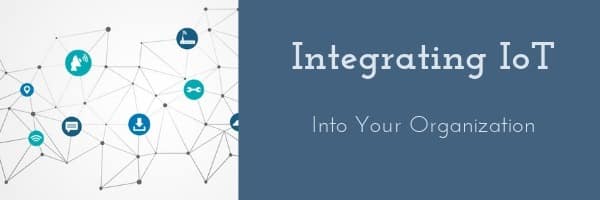What Does IoT Mean?
By now, you’ve probably heard the term Internet of Things (IoT), and may even know that it’s referring to devices that ‘talk’ to each other. From toasters and coffee pots to doorbells and light switches, having devices connected to the web is what all the cool kids are doing these days. By tying all of these devices together with automated systems the information that is then gathered can be analyzed, and actions can be taken in response. What does that mean? Intel has put together a great little video to help explain how IoT creates a system of systems to analyze data.
All That Sounds Great – Give me All The Things!
Your smart watch tells you how many calories to eat based on your activity. Your fridge tracks food consumption and builds a shopping list for you. The dash button you have on your washer reorders your laundry detergent. You preheat your oven from your cell phone on the way home. The building you work in heats and cools based on people in the building. Certainly not going to downplay the value of time saving. Personally, any time that I can get back is a huge benefit. But, I like my benefit to be equal to that of the entity I give my info to.
In an organization, you have to be doubly careful about the information you are giving out. You certainly wouldn’t want your wifi units broadcasting your network address out to every hacker driving by. You also wouldn’t want a visitor to your location to find an unsecured thermostat device. Devices such as that one could be compromised and used as an attack point. Cybersecurity needs to be a primary concern when IoT devices are implemented.
What are the Privacy Implications?
Anything connected to the internet can be used, abused, and hacked, period. That is something to keep in mind as a consumer of IoT. A connected fridge that tracks consumption could be used to push targeted ads for food or takeout. Your smartwatch knows what physical activity you get, and what kind. The building thermostat knows if and when people are there. Even our printer/copier at the office can ‘listen’ to us. We can now tell it to print something without hitting a button. The convenience for most Iot is balanced by privacy concerns. We all need to ask what would stop whomever is analyzing the data we give out from using it against us? We are already seeing ads on Facebook and other media sites that target things we have talked about with our mobile phones present.
Setting Security Standards for IoT
Right now there are no security standards for IoT devices. You as a (smart) consumer must decide what levels of security you are adopting. First things first, as a consumer you need to have security in place before adopting IoT. Security starts at the point where your devices meet the internet. For most people that point is WiFi. If you don’t have a secure password on your wifi, or still have the default one. Change it. I’ll wait. Next, as you add things to your home or organization like a wearable, doorbell, camera, etc. Be certain the devices used are password protected. Also, be certain to give out the least amount of data you or your organization finds acceptable. For example, never share your contacts with the thermostat application – why does your thermostat need to know who you contact?
I look forward to the day I can walk into a room and order the lights on to 50% while my tea (earl gray, hot) is immediately available from the replicator.





